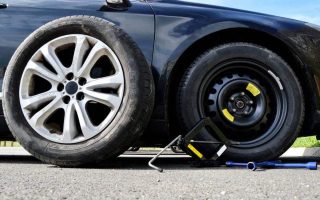In the realm of automotive safety, few contemporary inventions have been as revolutionary as the airbag.
Deployed in milliseconds during a collision, airbags are designed to mitigate the impact of a car accident, reducing the risk of severe injuries.
However, as with any technological advancement, airbags come with their set of pros and cons. In this article of LadyAutoBlog.com, we’ll delve into the intricacies of car accidents and airbags, exploring their benefits, potential drawbacks, and addressing common concerns.
The Pros of Airbags
Engineered to reduce injury severity, airbags have proven instrumental in preventing serious harm during accidents. Their rapid deployment underscores their pivotal role in enhancing overall vehicle safety and minimising the consequences of collisions.
Reduced Injury Severity
The primary advantage of airbags is their ability to reduce the severity of injuries during a collision. By providing a cushioning effect, they absorb some of the impact force, particularly to the head and chest, minimising the risk of severe trauma.
Enhanced Seat Belt Effectiveness
Airbags complement seat belts, working in tandem to enhance overall safety. In a crash, the combination of airbags and seat belts offers a comprehensive restraint system, reducing the likelihood of occupants striking the vehicle’s interior.
Protection in Frontal Collisions
Airbags are most effective in frontal collisions, where the risk of head and chest injuries is higher. They deploy rapidly upon impact, creating a protective barrier between the occupant and the vehicle’s interior.
Advanced Safety Systems
Modern vehicles often feature advanced safety systems that include multiple airbags strategically placed throughout the vehicle. Side-impact airbags and curtain airbags further enhance occupant protection in various collision scenarios.
The Cons of Airbags
While airbags are integral to vehicle safety, they’re not without drawbacks. In some instances, airbag deployment can actually cause injuries by itself, particularly to smaller occupants or in low-speed accidents.
The force of deployment may lead to bruises or abrasions. Awareness of these cons is vital for a balanced understanding of airbag technology.
Injury Risk to Children and Small Adults
While airbags are designed to protect adult-sized occupants, they can pose a risk to children and small adults. In some cases, the force of airbag deployment may cause injury, emphasising the importance of proper seating positions and restraints.
Potential for Facial Injuries
The rapid deployment of airbags, especially in older models, can lead to facial injuries. While advancements have been made to mitigate this risk, it remains a consideration in certain circumstances.
Non-Deployment in Certain Collisions
Airbags are designed to deploy in specific collision scenarios, primarily frontal impacts. In some types of collisions, such as side or rear impacts, airbags may not deploy, leaving occupants with reduced protection.
Expensive Repairs After Deployment
Once airbags deploy, they need to be replaced, and the associated repairs can be costly. This expense is a consideration for vehicle owners, especially if the vehicle is older or has a lower market value.
Concerns and Common Questions
Car airbags stand as a remarkable advancement in automotive safety, significantly reducing the severity of injuries in collisions. However, it’s crucial to recognize that no safety feature is without its drawbacks.
Understanding the pros and cons of airbags allows vehicle occupants to make informed decisions, emphasising the importance of proper seating, restraint usage, and regular vehicle maintenance to ensure these life-saving devices function as intended.
The airbag can save lives during an incident, but it can also cause injuries. Nevertheless, it is an integral part of the car safety system. In the following lines, we will address several important questions, the answers to which people typically want to know
Are There Cars Without Airbags?
In recent years, regulations in many countries mandate the inclusion of airbags in new vehicles. However, older models or budget-friendly cars may not have airbags. It’s essential for buyers to check the safety features of a vehicle before purchasing;
Can Airbags Malfunction?
While rare, airbags can malfunction due to electrical issues or sensor failures. Regular vehicle maintenance and addressing any warning lights promptly can help prevent potential malfunctions;
Do Airbags Deploy in Every Accident?
Airbags are designed to deploy in moderate to severe accidents that meet specific criteria. In minor collisions or low-speed impacts, airbags may not deploy to avoid unnecessary activation.
How Does the Airbag Know Whether to Activate or Not?
The airbag determines whether to activate based on special sensors integrated into the vehicle. These sensors detect information of sudden deceleration or impacts indicative of a collision.
Once triggered, the airbag system rapidly inflates with gas to provide a protective cushion for occupants, minimising the risk of injury during the collision.
How Fast Does the Airbag React?
The speed at which an airbag deploys is incredibly fast, typically within milliseconds of a collision. Modern airbag systems are designed to respond almost instantly to the sudden deceleration or impact sensed by the vehicle’s sensors.
This rapid deployment is crucial for providing effective protection to the occupants by creating a cushioning barrier between them and the vehicle’s interior surfaces during a collision.

My name is Rebecca McCarthy and I am an American girl with British heritage residing in the beautiful city of Nashville, Tennessee. I have always had a keen interest in cars, particularly brand new ones that showcase the latest technology and design features. I am also passionate about travelling and experiencing new cultures, as well as enjoying hot summer days with friends and family.



